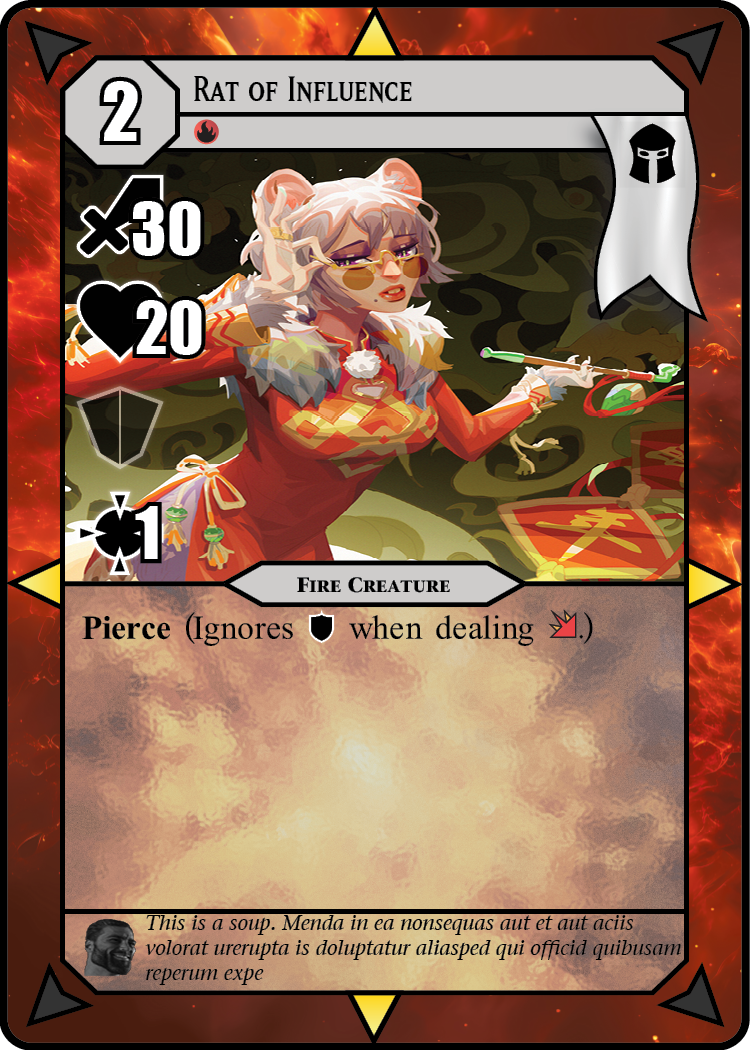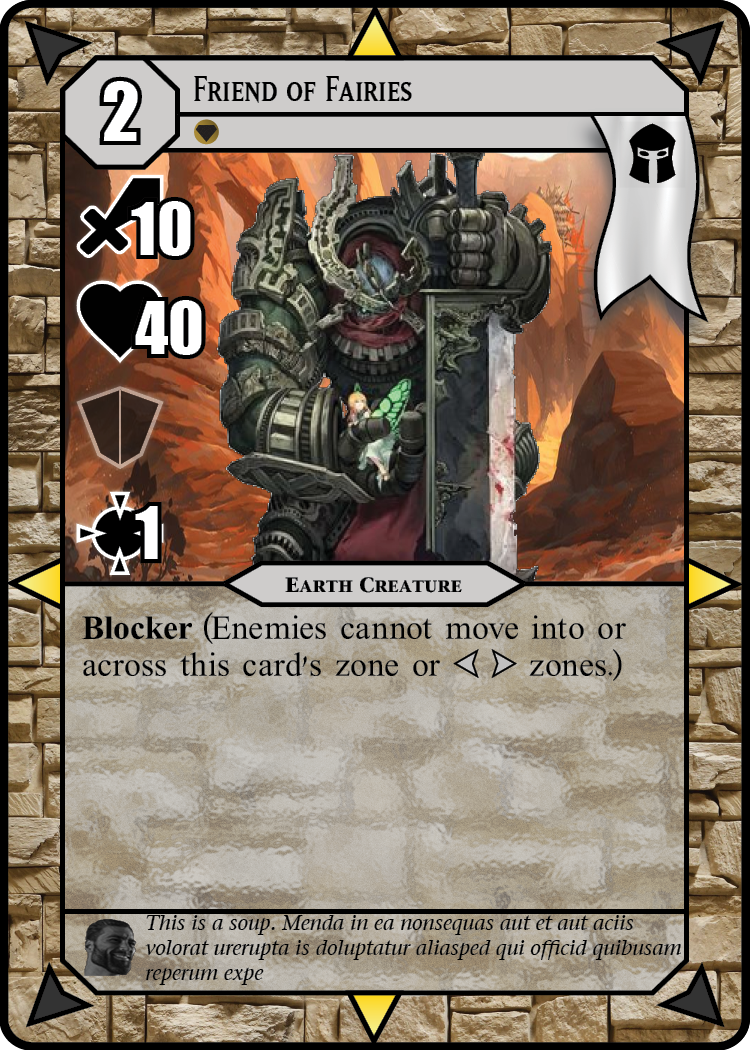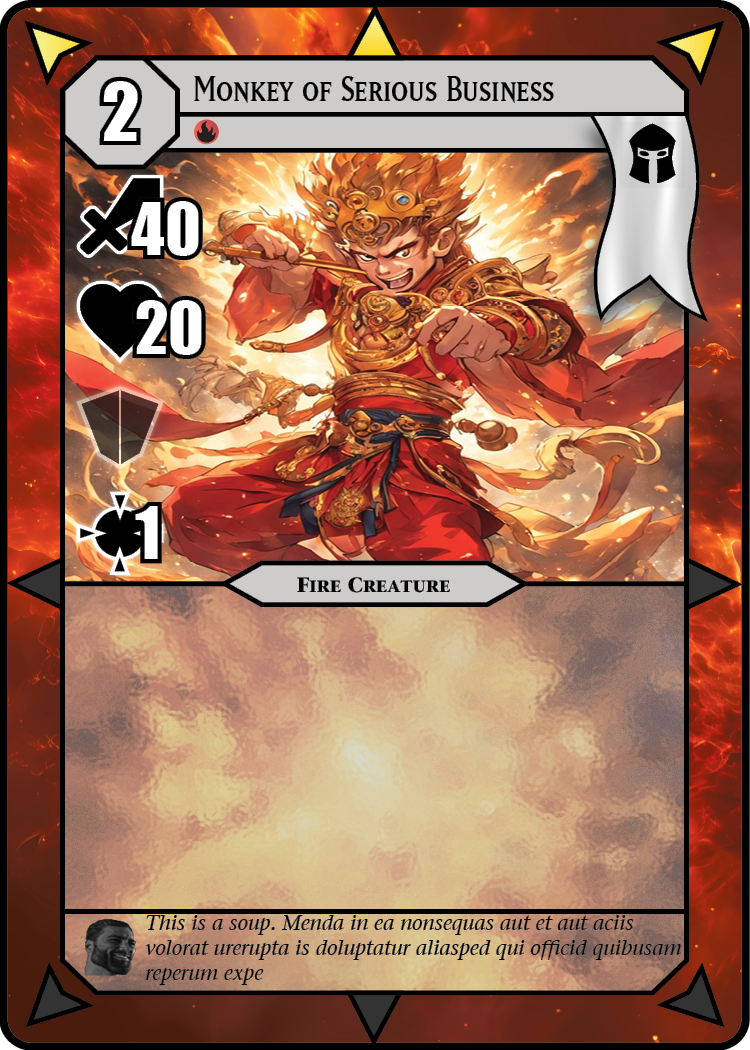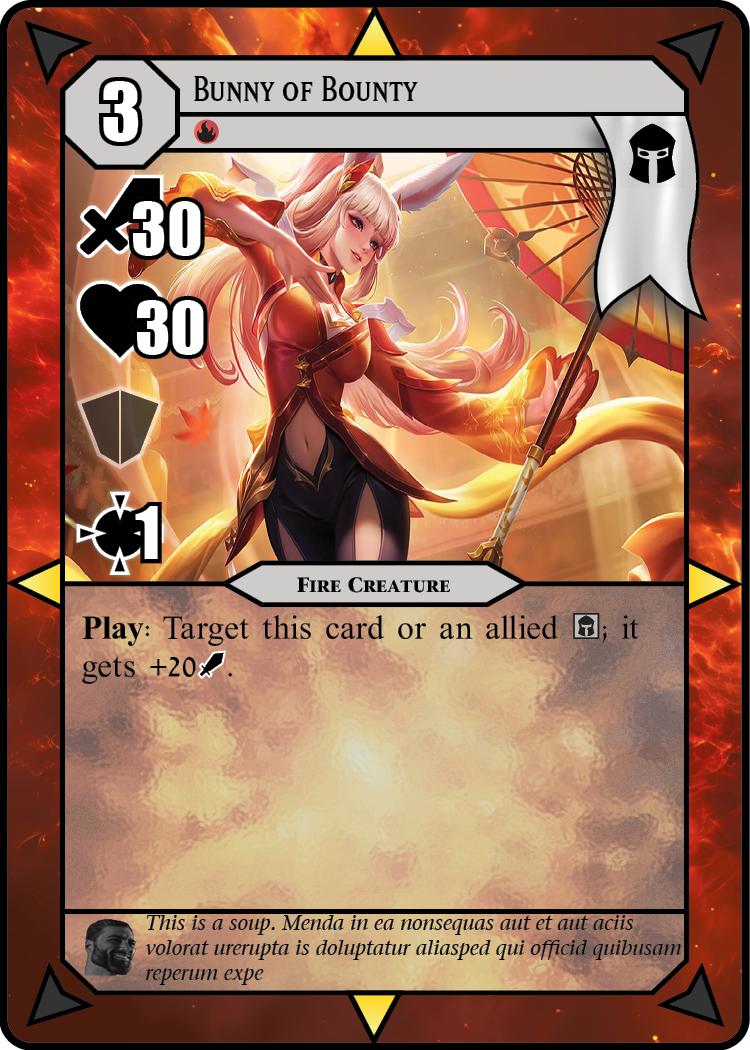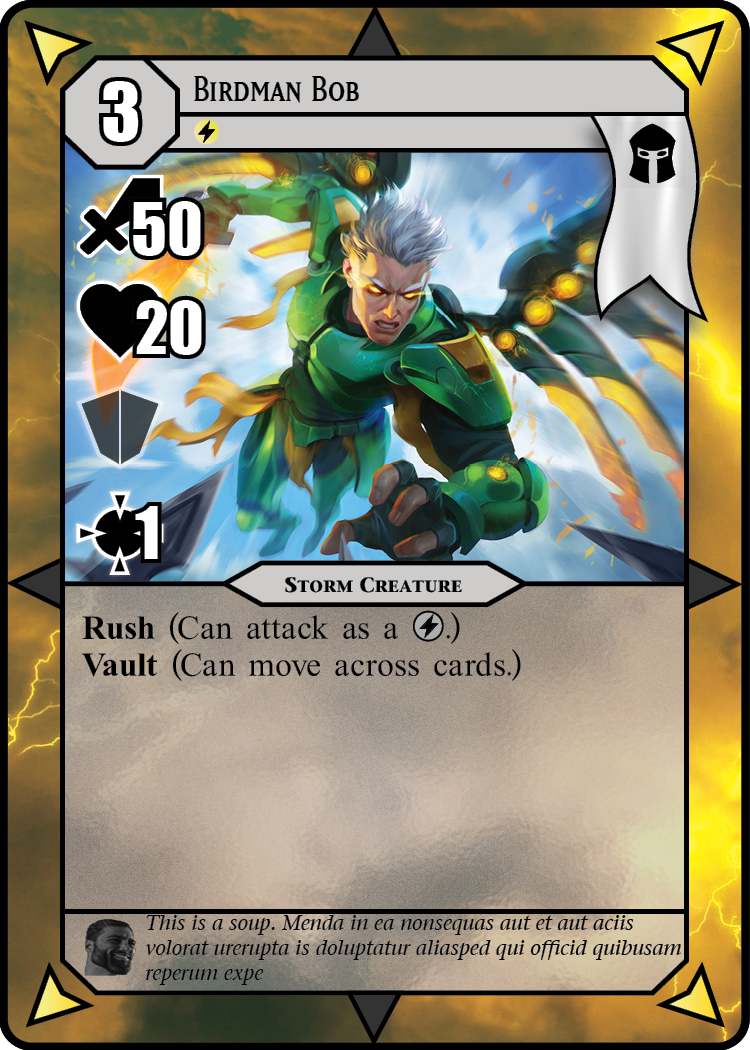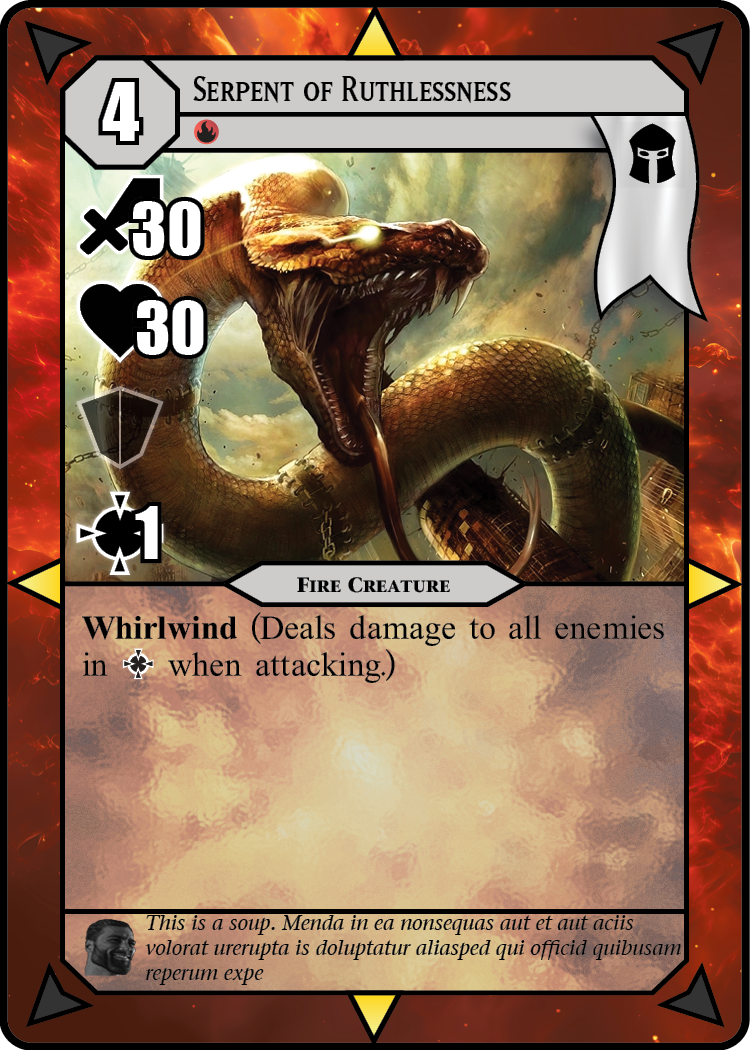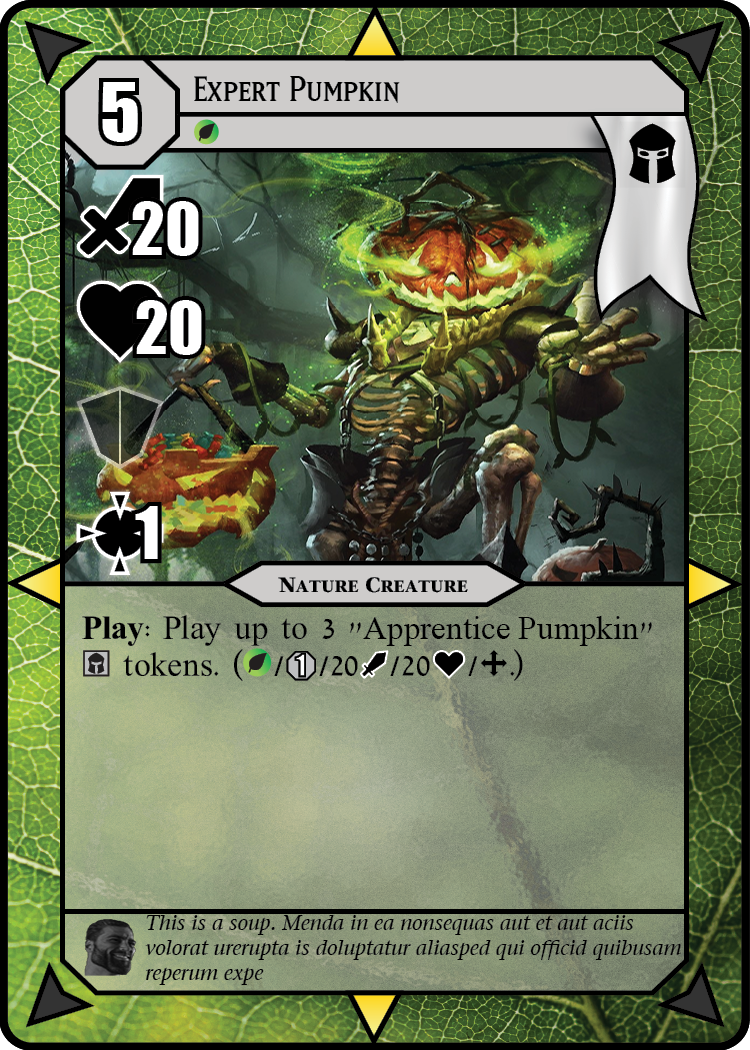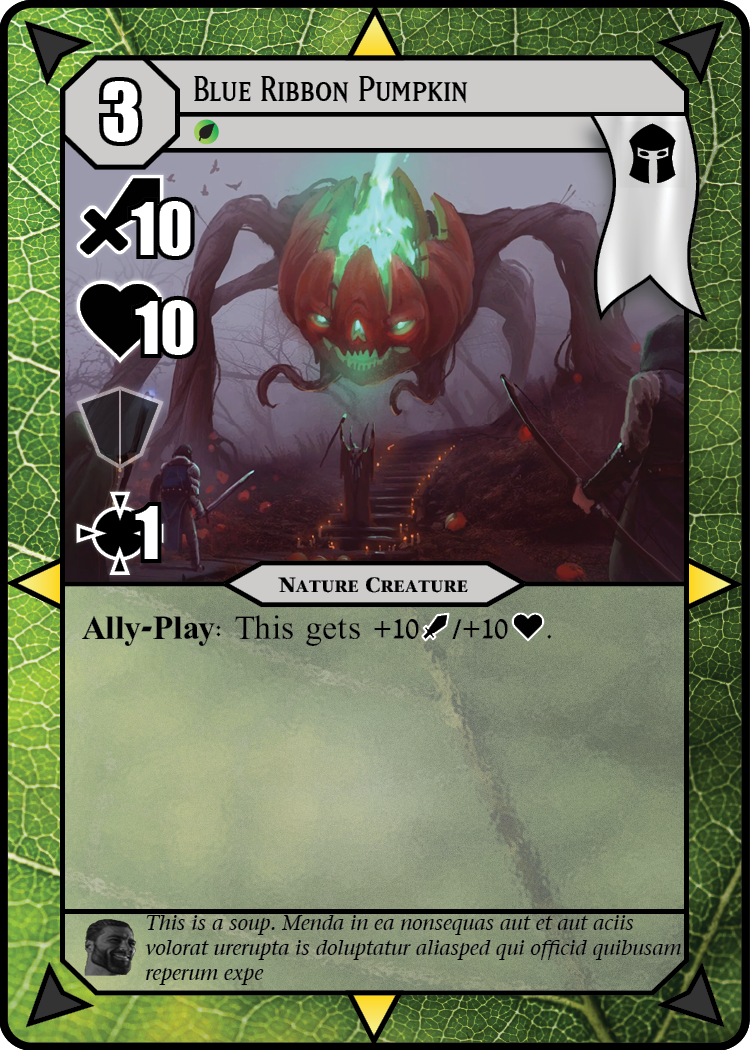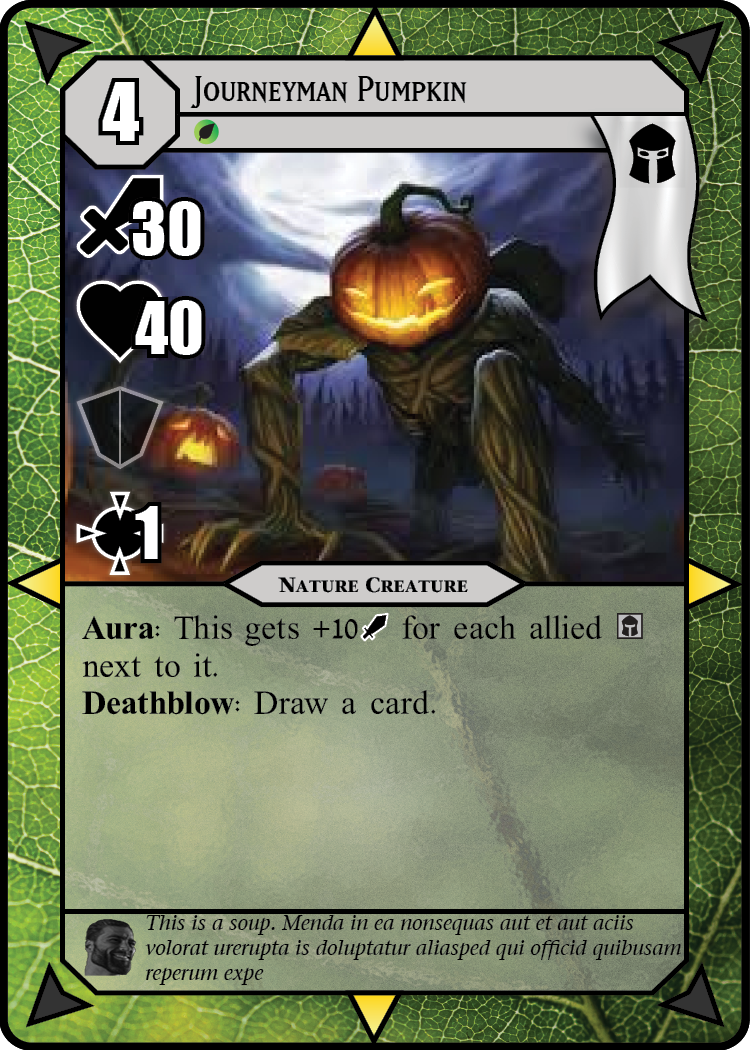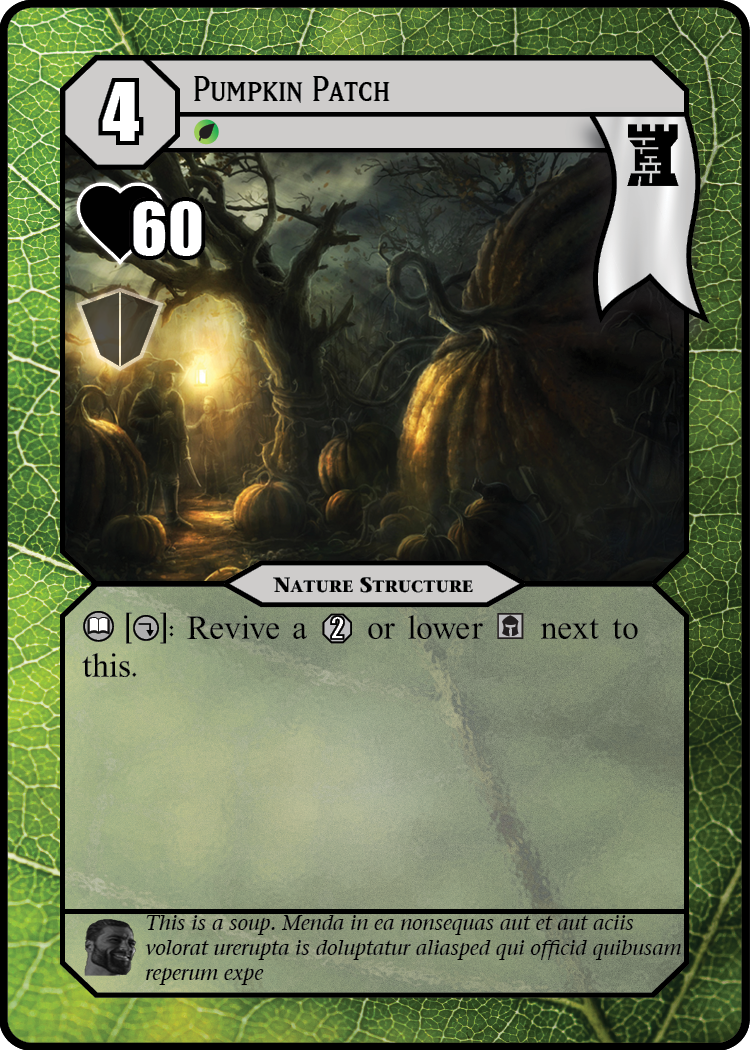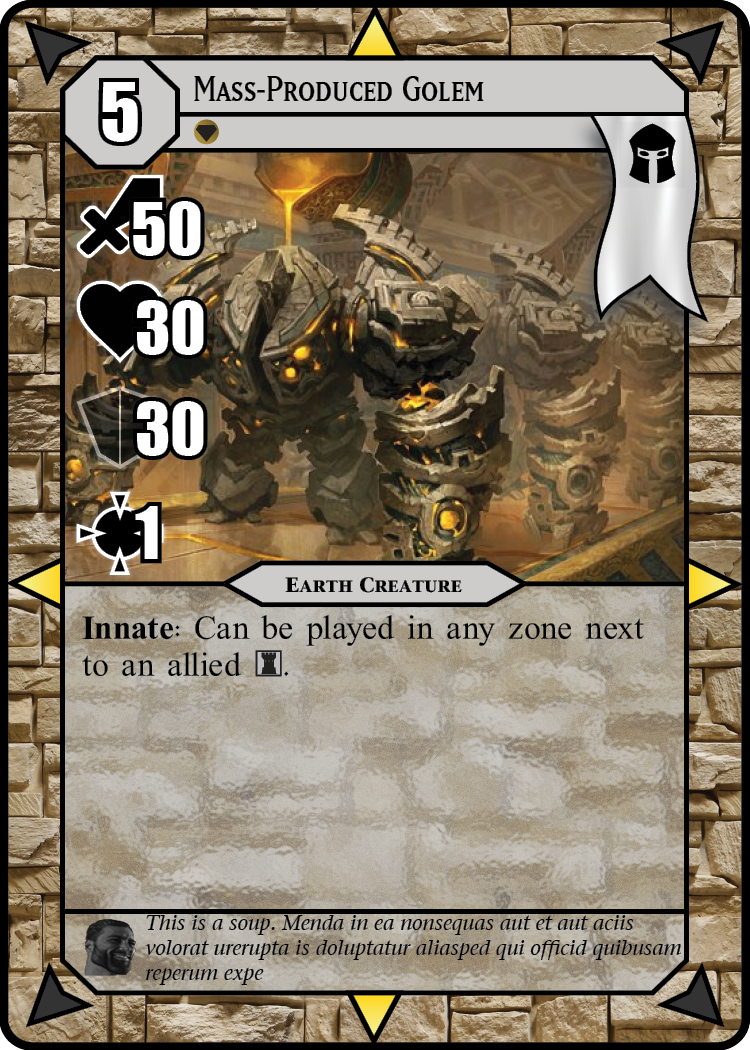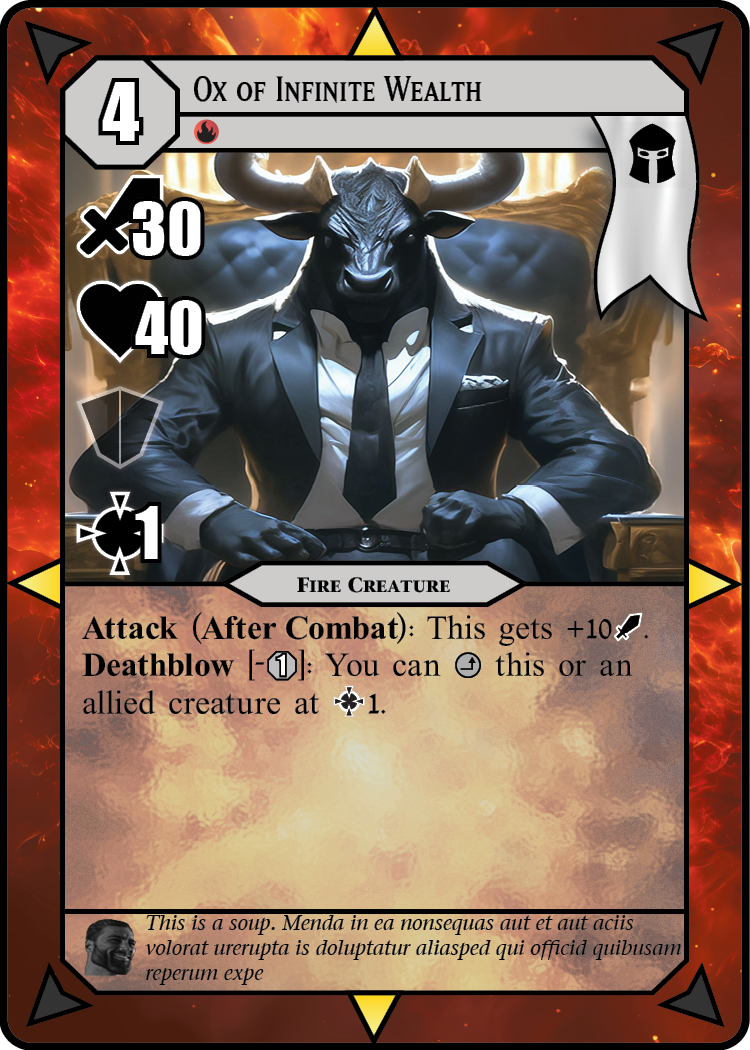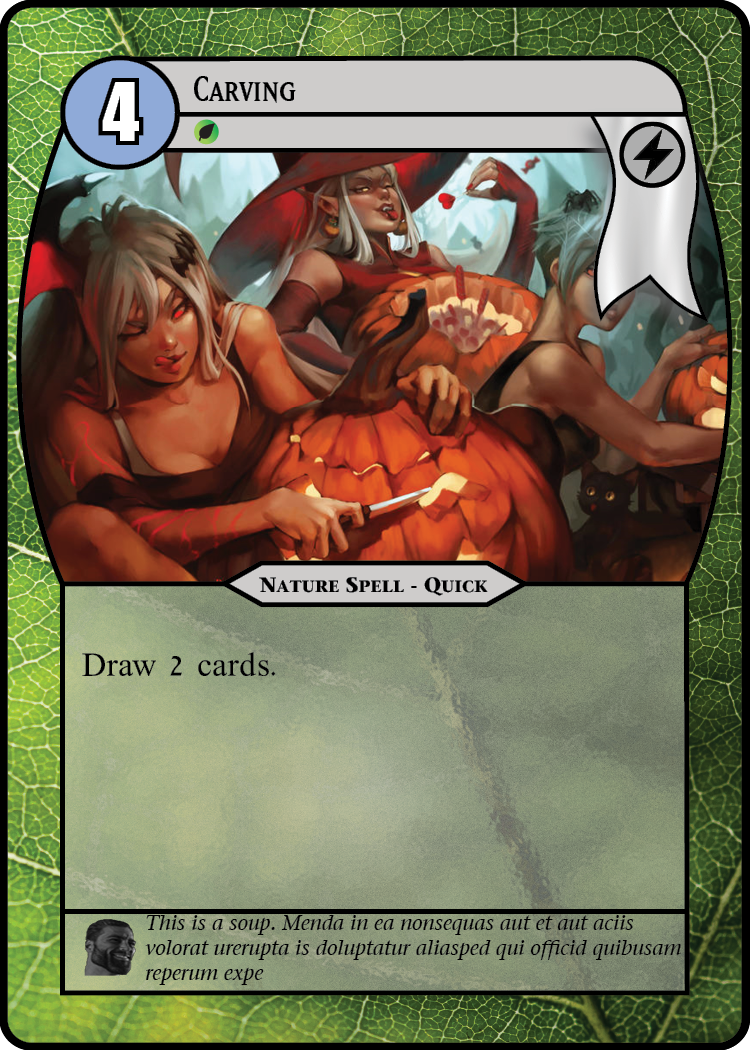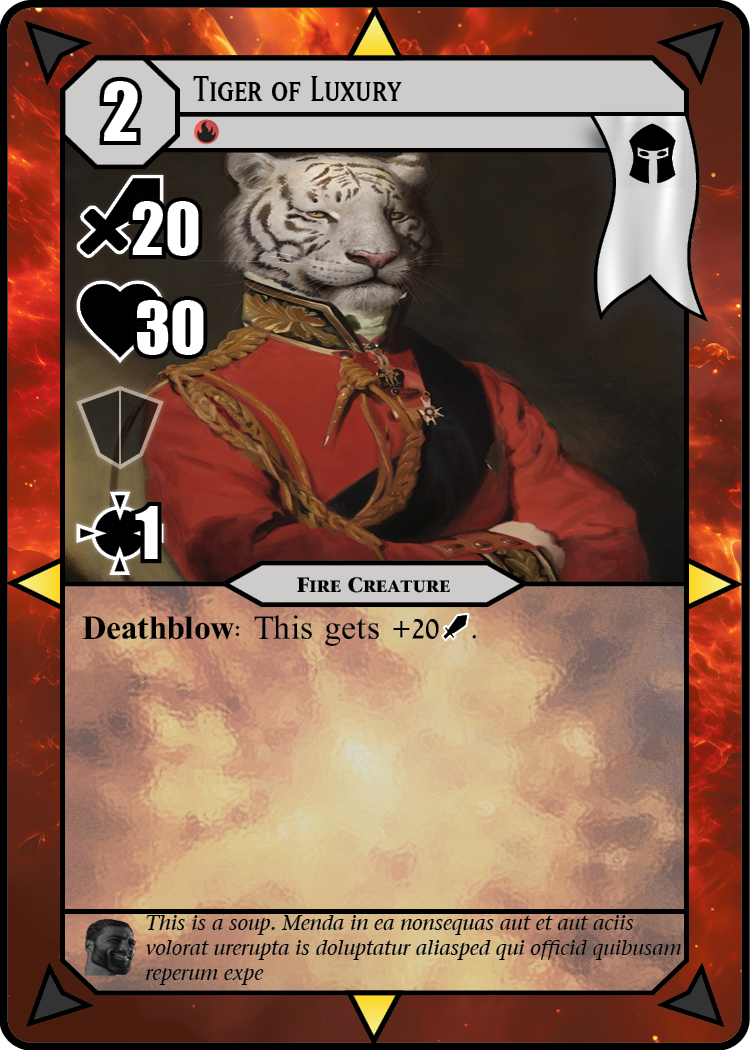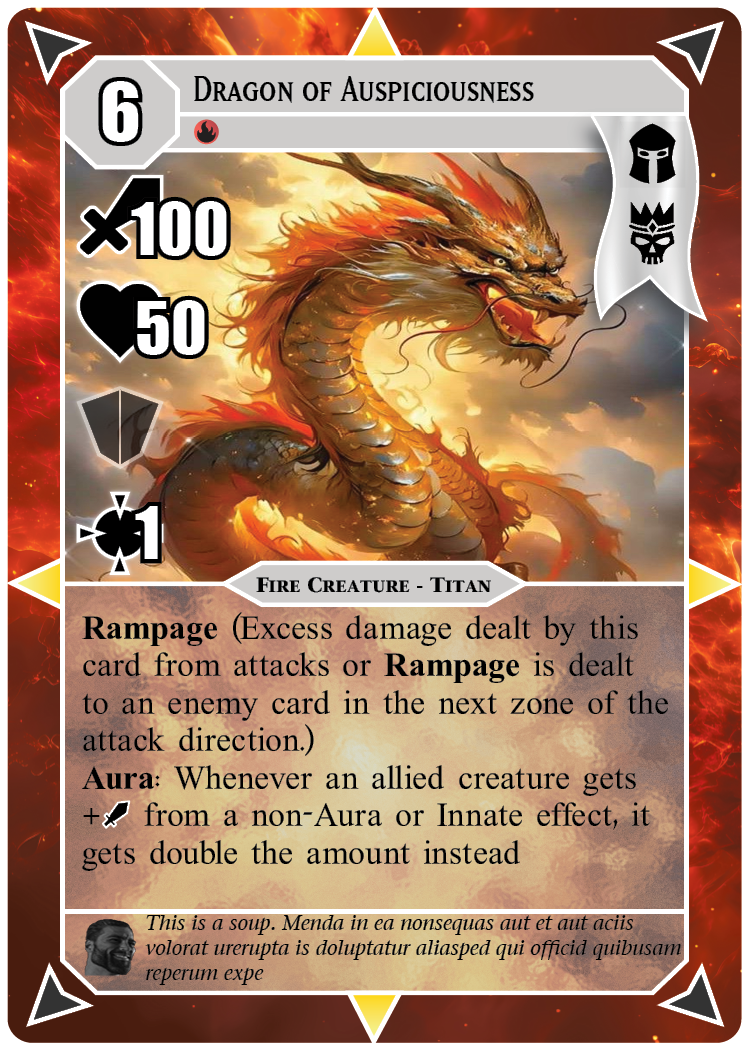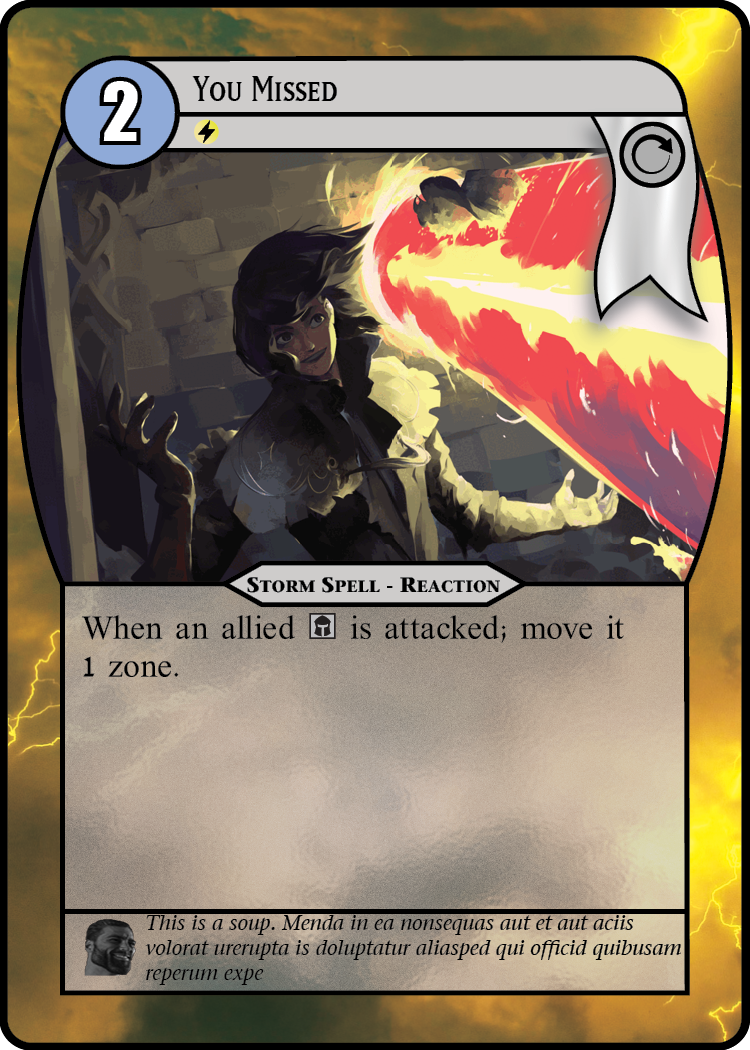My Process for Creating a Starter Deck for a Strategy Card Game
Start with Design Goals
Starter decks should be easy to use and geared towards new players: Anyone with a basic grasp on the game’s mechanics should be able to play with the decks, even if they are new to the game.
Starter decks should showcase the game’s features: Players playing with the starter decks should get a simplified, but accurate, experience of what the game is like as a whole.
Cards in the Starter deck should be balanced and useful: Cards should be designed with the intention of their balance and usefulness in a game between two Starter decks.
Translate Goals into Required Design Features
Geared towards new players:
Cards should have few effects or unique features, especially those available on the first turn: Players need to understand the rules before they understand card effects or how cards break the rules.
Cards which cost 2 or less are available on the first turn and should have at most 2 effects or features.
Cards which cost 3-5 should have at most 3.
Cards which cost 6 or more are end-game cards which can be afforded more, but should in general not have more than 4.
Cards with effects should not disrupt the game-state too heavily if effects are ignored or misinterpreted: Players may not read their cards fully, or may misinterpret their effects as they learn the game. Any effects that are too extreme should be avoided, especially cards with downsides or exceptions.
Showcase features:
Starter deck should feature each basic keyword and effect type: If all common keywords and effect types are represented, players will understand them when they encounter them later on in the more complex factions.
Cards should represent their Element: Cards with different Elements have different mechanical capabilities, and these should be respected in the starter deck.
Most cards should have effects: Most cards in the complex factions have effects, so most cards in the Starter Deck should have effects as well.
Cards should have synergy: Cards should work together to create a greater effect, it is a staple of the genre and present in all other factions.
Cards should utilize positioning: Card effects should utilize positioning and the board, as it is a selling feature of the game.
Balanced and Useful:
Conditional effects should have use cases: If a card has a conditional effect, there must necessarily be cards which allow that conditional effect to get value.
For each conditional effect, there should be at least 3 other cards which fit that condition.
Cards should be balanced: Cards should be at the same power level.
Creating Synergy Groups
My Approach - Create small synergy groups based on existing factions
A good approach to the starter deck is to show off some synergies that are present in the simpler factions. That way players will recognize them when they see them later. Each synergy group would have a few cards associated with them. Combos wouldn’t be necessary for players to pull off but it may lend them a sense of accomplishment when they spot them.
In addition, each group plays around with the general mechanics of the game, and is overall useful in most situations.
The Four Synergy Groups:
Small Creatures / Tokens: Synergies focused on creating lots of small creatures or tokens. Would also introduce the token mechanic to players.
Strength Boosting: Synergies which boost the Strength of other cards, or get value out of being boosted.
Structures: Synergies with having structures on the field, or giving structures special properties.
Drawing / Big Creatures: Drawing grants the player more resources to play large and impressive creatures.
Designing Cards
Creating cards which have basic Keywords
Starting with 2-cost creatures
2-cost creatures are available on the first round. Designing these first will provide a baseline for the rest of the deck.
Identifying which keywords and effects are suited for 2-cost creatures
Picking Keywords which are less powerful: Less powerful keywords are suited for less powerful creatures. More powerful keywords would require the stats to be altered to a degree where the card would feel very weak. Blocker, Defender, Pierce, Vault, Armor, 2+ Range, Triggers and effects were all suitable.
Using keywords which didn’t alter the game too much: Players will still be getting a grasp on how movement and attacking works. Any effect which altered that too much or was situational probably wouldn’t be great for the first round. That left Blocker, Pierce, Triggers and effects.
Identifying Simple Effects: Play, Destroyed and Attack triggers, as well as Aura effects were all very common in other card games, and were good effect types to include early on.
Including Unique Movement Style: Introducing players to cards with a non-standard movement style would help introduce the movement style mechanic.
2-Cost creatures with Basic Effects
Creating ‘Countering’ Relationships between Cards
Cards which ‘Counter’ each other can create an interesting dynamic, even from round 1. And it can allow players to express their skill, even as they’re learning the game.
Rat of Influence: Not as effective as the other creatures, but can defeat Monkey of Serious Business, and trade up against armored creatures later.
Friend of Fairies: Can block Rat of Influence, and defeat Cool Joe, even with only 10 strength.
Monkey of Serious Business: Strong aggressive creature that can kill Friend of Fairies, but with a limited movement style.
Cool Joe: Can kill any of the aggressive creatures with its effect.
Bell Tower: Can’t attack, but can buff an ally’s armor. Introduces Armor and Activated effect mechanics, and can be killed by the Rat of Influence. Can buff an Obelisk’s Armor so it isn’t completely useless on the first round.
Adding in 3 and 4 cost cards - More complicated effects and payoffs
Introducing the more powerful or intricate effects: The powerful keywords and more complicated, rule altering interactions avoided before can be introduced in the higher cost cards.
Adding a payoff to the Pierce Keyword: Having a strong defensive card with Armor will make the card with Pierce suddenly become a useful tool.
3-Cost creatures with Basic Effects
Examining relationships and Dynamics between high and low cost cards
Creating a defensive Round 2 powerhouse: Defender and Armor combined create a perfect defensive card for round 2, which is effective against all other 2-costs, except the creature with Pierce.
Aggressive pusher - but vulnerable: Birdman Bob can’t be easily blocked, and can deal heavy damage quickly, but it is conversely vulnerable to just about every 2-cost.
Turn the Tide: Whirlwind is also very effective against many 2-costs at once, but it requires the initiative.
Placeholders now, effects later
Several other creatures were drafted, with Synergy effects added to them later:
3-cost creature with 2 Range.
6-cost creature with Rampage.
5-cost creature with 5 strength, 3 armor.
Adding Synergy Cards
Small Creatures / Token Synergy Cards
Cards which create tokens: Cards which flood the board with tokens.
Cards which summon 2-cost creatures: This synergy could include cards which utilize the 2-cost creatures, resummoning them later on.
Cards which benefit from playing or controlling creatures: These synergy cards would incentivize players to play many creatures instead of just one or two.
Cross-Synergies, and introduced concepts
Introducing Trigger Modifiers with simple effects: Blue-Ribbon Pumpkin was a great way to introduce the Ally- modifier to the Play Trigger, which happens whenever you play an ally. The card effect is as simple as it can get, which should help players to not get overwhelmed by the mechanic.
Adding Cross-Synergies: Initially, Journeyman pumpkin only had the Deathblow effect. However, this was a good opportunity to create a card which had synergy with both the Small Creatures / Tokens strategy as well as the Drawing / Big Cards strategy.
Structure Synergy Cards
Structures: For there to be structure synergy there needed to be structures.
Structure Enhancers: Cards which enhance structures.
Structure Beneficiaries: Cards which benefit from there being structures on the board.
Drawing / Big Creatures Synergy Cards
Draw cards: Cards which draw cards into the hand, which can be converted into permanent energy.
Large Creatures: Powerful creatures with a high cost.
Cross-Synergies, and introduced concepts
Innate Trigger: This was a great opportunity to introduce an effect with the Innate trigger, and show how it differs from Auras.
Cross-Synergies: Gilded Horse statue was a structure that buffed Strength, which tied into strength buffing synergies.
Strength Buffing Synergy Cards
Strength Buffers: Cards which increase the Strength of other cards.
Strength Receivers: Cards which gain extra benefit from increased Strength.
Refreshing: Cards with high Strength benefit from being refreshed for multiple attacks.
Cross-Synergies, and introduced concepts
Deathblow effects: Cards with powerful Deathblow effects benefit from Strength to make its effect more likely to activate.
Turning Rampage card into a powerful boss: Rampage is an effect which benefits from very high Strength. It made sense for a high cost powerful ‘boss’ card.
Introducing Triggers with cost: Ox of Infinite Wealth’s effect introduced the concept of a trigger with a required cost, in this case paying 1 Energy.
Adding in Interesting Spells
Spells enhance the gameplay of Empyre, allowing for more dynamic swings in tempo. Earlier testing had identified some spells which encouraged fun dynamics.
Spells would also introduce the concept of reactions - acting during the opponent’s turn. Which could be reinforced.
Introduced concepts
Obliterate: A powerful removal spell that can destroy just about any troublesome creature.
Yoink!: A way to get a problematic card out of the opponent’s hand. Utilizes the Swap mechanic for some fun mind games.
You Missed: A very straightforward reaction which allows you to avoid an attack. Introduces some aspects of series and effect resolution and how if a creature moves out of attack range, an attack does not resolve (explained in rules)
Deck Composition
My Approach
Ensure players had a high chance of drawing one of the 2-cost creatures on their first turn.
Low cost creatures should be more numerous than high cost creatures.
Each Synergy group should be represented equally throughout the deck.
Card Distribution:
2-cost: 3 copies each - 18 cards total.
3-5 cost: 2 copies each - 26 cards total.
Spells: 2 copies each - 8 cards total
6-10 cost: 1 copy each - 3 cards total.
Validation
The total number of cards was 55, which was consistent with play with the other factions.
With 18 2-cost cards, there was a 32% chance to draw one of them on the first round. Considering 7 cards were drawn at the start of the game, that presented a very high chance of success.
No one synergy group was allotted more cards in the deck than any other.
